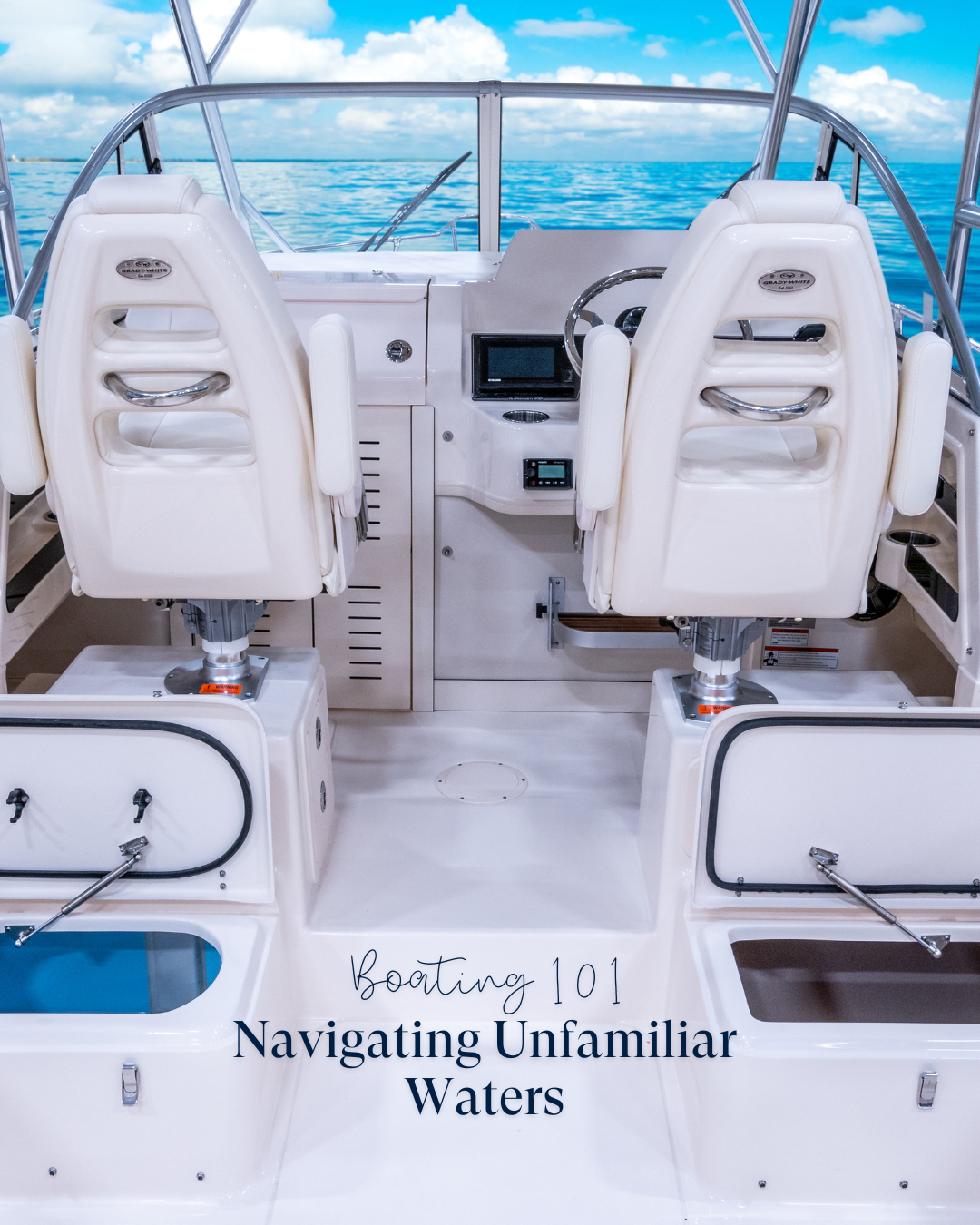
When it comes to navigation, most of us simply rely on our Global Positioning Systems (GPS). However, there are some cases where this plan could be called into question. For instance, if the channel has shifted and you haven’t updated the GPS chart, or if your battery power is significantly depleted, the loss of your electronics is one of the first indicators. Before you leave the dock, make sure to do the following:
Update Your GPS Chart Plotter
This is important to do before you head out into unfamiliar waters. Remember that you’ll need Internet access to do this, so do the update when you’re having your boat serviced at the marina or before you leave for the boat ramp. A marine navigation app is also a good idea. Popular ones include Aqua Map, Argo and KnowWake.
Ask a Reliable Person at the Dock if There’s Anything You Need to Know About the Area You’re Going
Fellow boaters will be the first to know about shifting channels or directional buoys that may be out of commission. Our crew is happy to share its extensive knowledge with you ahead of your excursion!.
Keep a Nautical Chart Onboard and Understand How to Read It
Nautical charts are maps used in navigating bodies of water. They provide information on depths, dangers, harbors, bridges, and aids to navigation but nautical charts look a little different from land maps. Charts have a lot of detail and they vary somewhat around the world. Here are common features of typical U.S. charts.
Small scale charts are appropriate for boating on open waters and will show less detail. When navigating near shore, use large scale charts that cover a smaller overall area in greater detail that you’ll need to transit safely.
Charts have latitude and longitude marked at the edges. Given a set of two numbers (lat/lon), you should be able to locate yourself on a chart anywhere in the world.
Charts show aids to safe navigation like buoys, beacons, lights, channels, etc. Diamonds are buoys, squares and triangles are fixed markers, and teardrops represent lights with accompanying notes on their flashing pattern printed alongside. You’ll need to learn what these and other symbols look like and what their colors mean. Key landmarks used to assist with visual navigation, like large tanks or towers ashore, are generally depicted with a circle and a dot next to them.
Most charts will show dry land in a tan color and water in shades of blue or white. White will be very deep, light blue very shallow, and a standard blue shows a depth somewhere in between.
A common depth that runs along a shoal or shore is called a depth contour and appears as solid line with a number that states the depth. Depths are designated in feet, fathoms (six feet) or meters (3.3 feet). Each chart will specify what measurement is used for its depths, or “soundings.” It’s usually under the title of the chart and printed in large letters. Depths are generally provided in Mean Lower Low Water (MLLW) which is a sort of average based on the local tides.
Hazards (or obstructions like rocks, shipwrecks, etc.) have varying abbreviations and symbols. “Obstn” means obstruction and “rky” means rocky, but there many others. A key to the symbols may be in the notes section printed somewhere on the chart. For a complete listing of chart symbols, terms and tips for reading charts, a booklet called NOS Chart No. 1 covers all sorts of useful information for U.S. charts and can be downloaded from NOAA.
Charts have a compass rose printed on them in a magenta color in concentric circles. The outer circle is based on true north and the inner one is angled to point to magnetic north. Because the Earth’s magnetic field changes over time, the inner circle may be off by a couple of degrees and will have to be updated periodically. The compass rose tells you which direction you’ll need to navigate to reach your destination and you’ll need to choose whether you’ll be using true or magnetic north to determine which circle to use. When traveling short distances, the difference will matter little—but when crossing oceans, a few degrees can make a big difference.
Distances are shown in either statute miles (inland waterways, lakes, Intercoastal Waterway) or nautical miles (1.15 statue miles) for offshore waters. A knot is a unit of measurement that depicts distance over time. For example, traveling at 10 knots means you’ll make 10 nautical miles per hour.
Charts are a snapshot of the time they were created. Remember that buoys can drift off station and sandbars shift with weather. Always keep your eyes open so you can verify visual information and compare it with what you’re seeing on a chart.
Sources: Discover Boating, Grady-White
